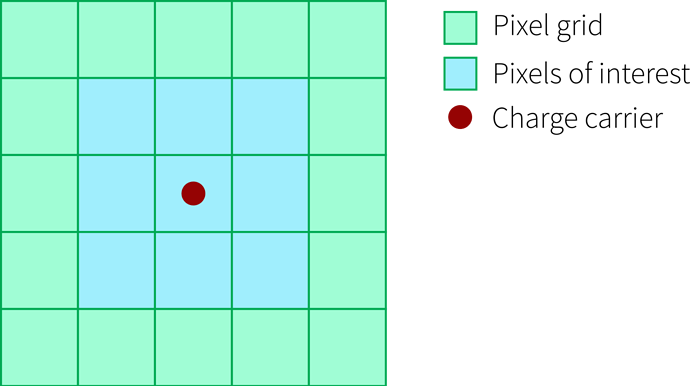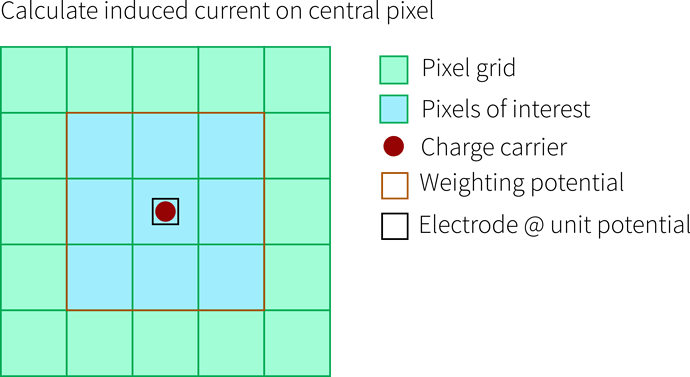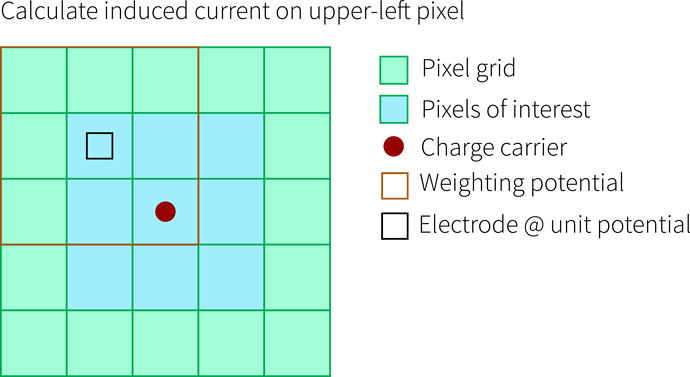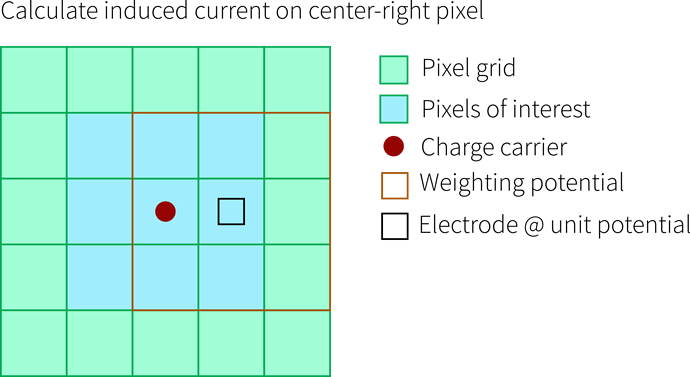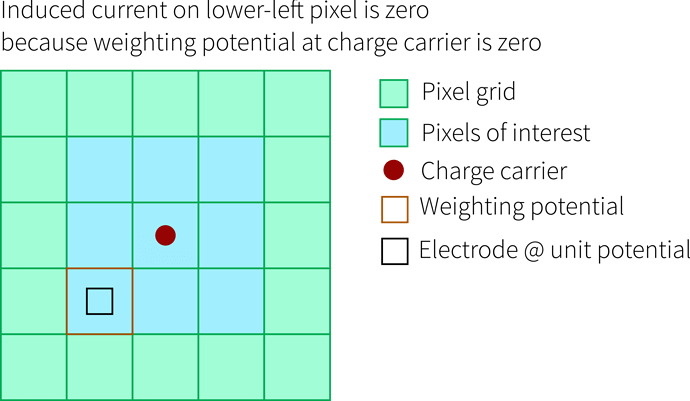Hi @cferrero
concerning the induction matrix and weighting potential: I made some drawings which I hope help to explain the concept. 
The situation
You have a charge carrier located in a pixel, here we look at one charge carrier (red) in the center pixel of a 5x5 pixel sensor (green). We are now interested in how much current this carrier induces in the pixel it is in as well as the surrounding ones, se we define a 3x3 induction matrix (blue):
The Weighting Potential
Now we need a weighting potential in order to use the Ramo theorem (orange). The theorem tells us that we can use weighting potential differences to calculated induced currents. Important here is that only one electrode is set to unit potential, all others to ground - and we always calculate the induced current for exactly this electrode. So for the picture below, this would be the central pixel:
Getting Current for Neighbors
Now it becomes more interesting because we would also like to know the current e.g. in the pixel in the upper left. Therefore we need to shift our weighting potential such, that the unit-potential-electrode is located on that pixel. Then, the charge carriers are somewhere in the lower right of the weighting potential, where it falls off to zero - and we can calculate the (probably small) induced current in that pixel:
This procedure we continue for other pixels:
Conclusion
- if we want the induced current of neighbor pixels, we need to have a weighting potential that is at least as large as the sub-matrix we would like to calculate currents for - because we need to shift the potential around
- if we are only interested in the single pixel the charge carriers are moving below, there is no need for an extended weighting potential and we can use that of a single pixel - we won’t get induced currents in neighbors though, as becomes clear from this drawing:
All the best,
Simon
